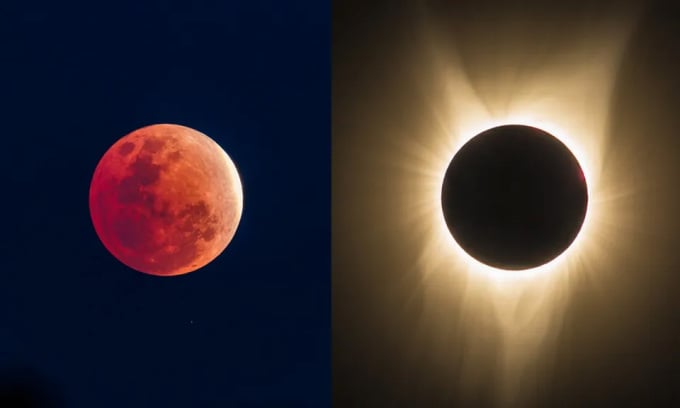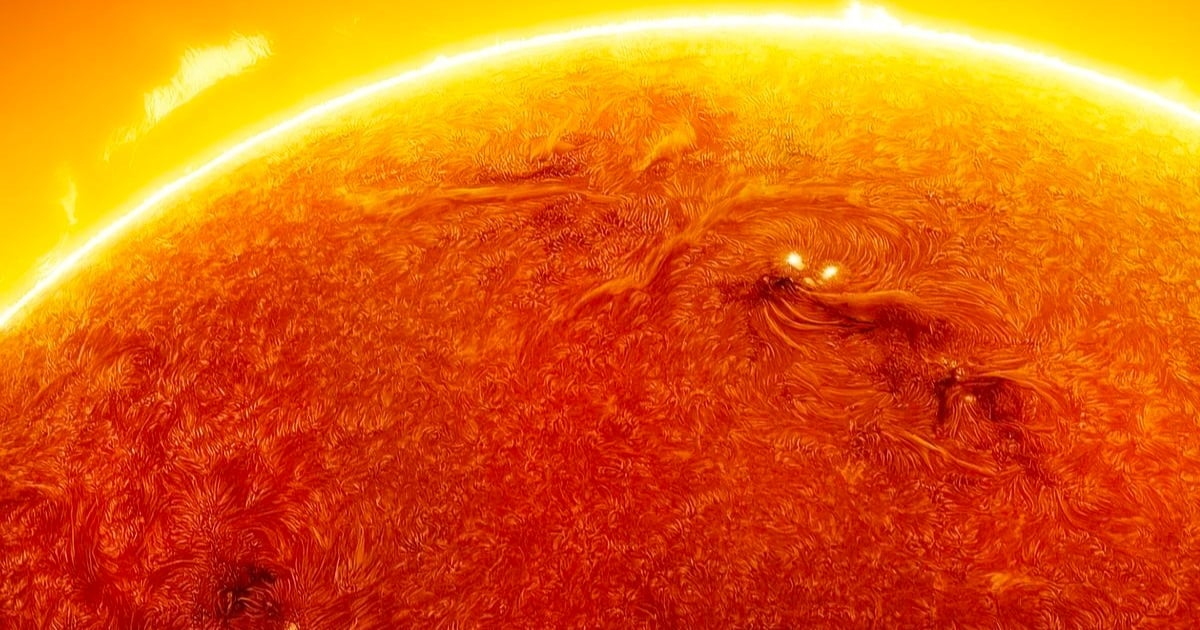The annular solar eclipse on October 14 and the partial lunar eclipse on October 29 are two notable astronomical events occurring this month.

Partial lunar eclipse (left) and annular solar eclipse (right). Photo: Space/Getty
An annular solar eclipse will be visible across eight southwestern states. This type of eclipse occurs when the Moon is slightly farther from Earth than usual, making it appear smaller and unable to completely cover the Sun, leaving a thin “ring of fire.” People outside the annular phase can still see a partial eclipse, including the entire United States and parts of Mexico, Central America, Colombia and Brazil.
The next annular solar eclipse will take place on October 2, 2024. Astronomers in the Pacific and parts of South America will be able to see the ring of fire. But before that, another interesting event will take place on April 8, 2024: a total solar eclipse. In fact, scientists are using the upcoming annular solar eclipse as a "warm-up" measure to conduct atmospheric and heliosphere research during the 2024 total solar eclipse.
The partial lunar eclipse in late October will be visible across much of the Eastern Hemisphere, including Europe, Africa, Asia, Antarctica and Oceania. During the partial lunar eclipse, the Moon will pass through the Earth's shadow and appear darker than usual. The partial lunar eclipse will begin at 2:36 a.m. on October 29 (Hanoi time) and end at 3:53 a.m.
This is the second lunar eclipse this year, following a penumbral lunar eclipse in May. During a penumbral lunar eclipse, the Moon enters the Earth's outer shadow, appearing dimmer but not disappearing. The next lunar eclipse, also penumbral, is scheduled for March 25, 2024, and will be visible in the Americas.
Thu Thao (According to Space )
Source link







![[Photo] Closing of the 11th Conference of the 13th Central Committee of the Communist Party of Vietnam](https://vstatic.vietnam.vn/vietnam/resource/IMAGE/2025/4/12/114b57fe6e9b4814a5ddfacf6dfe5b7f)

























![[Photo] Overcoming all difficulties, speeding up construction progress of Hoa Binh Hydropower Plant Expansion Project](https://vstatic.vietnam.vn/vietnam/resource/IMAGE/2025/4/12/bff04b551e98484c84d74c8faa3526e0)





























































Comment (0)